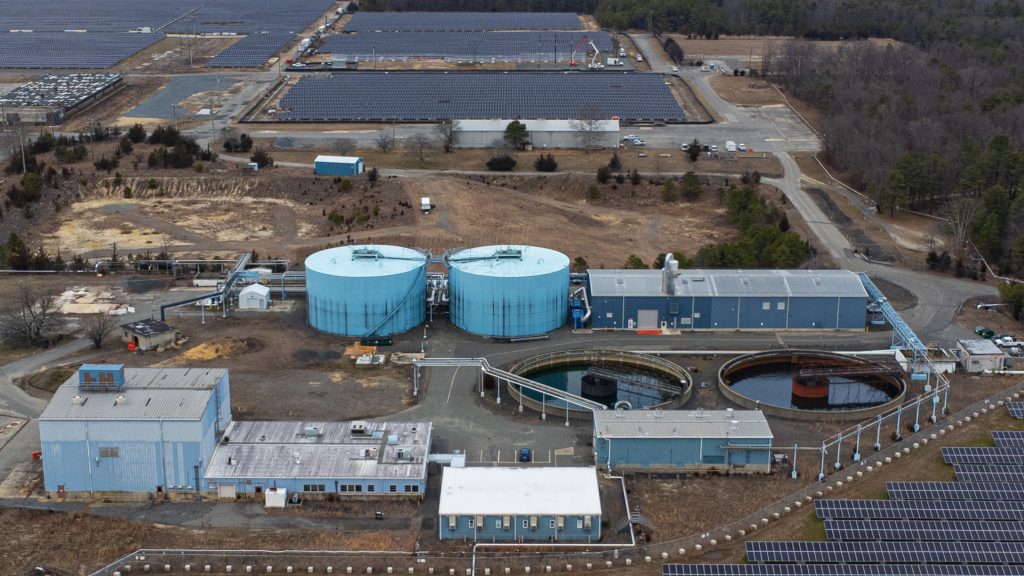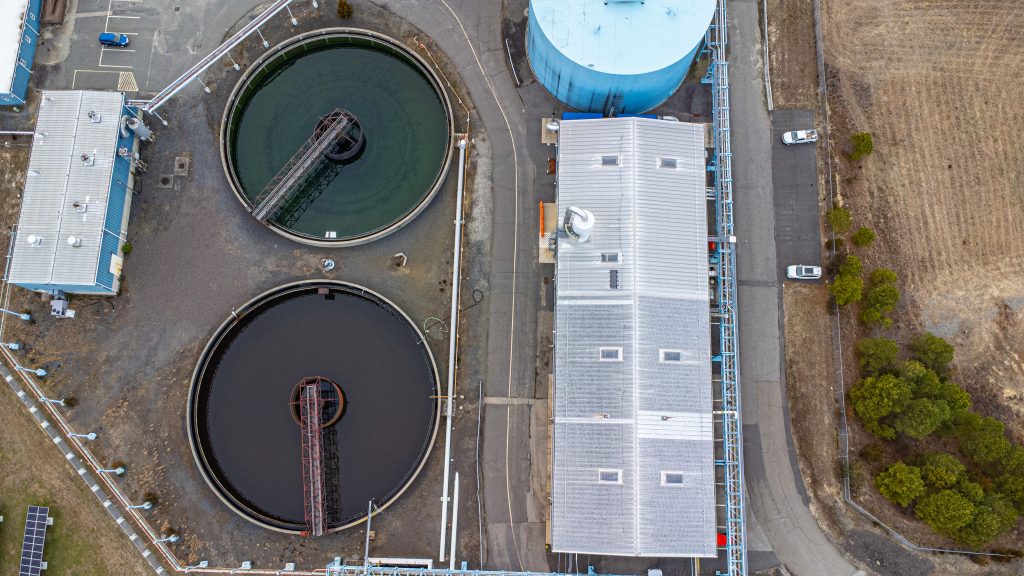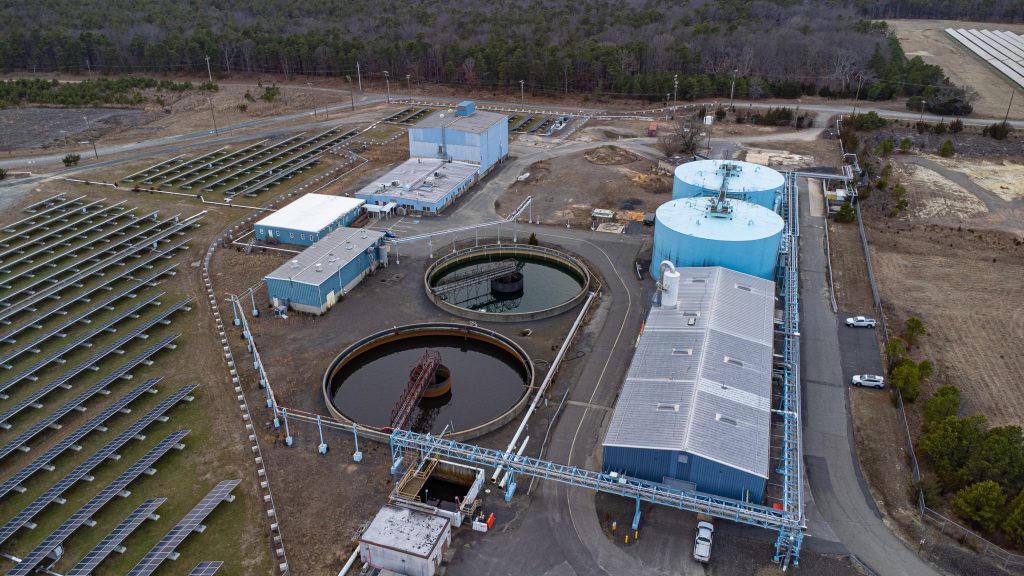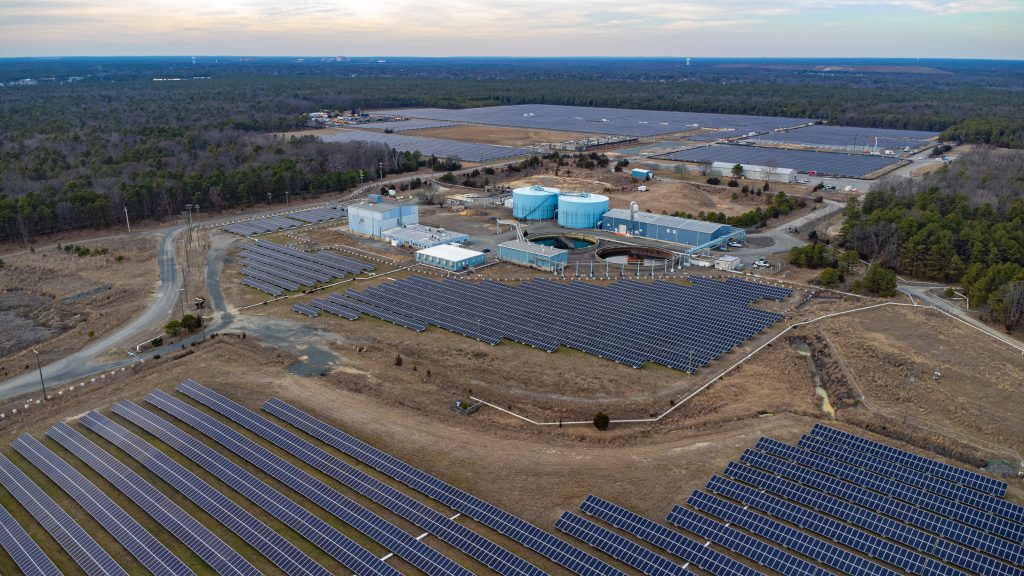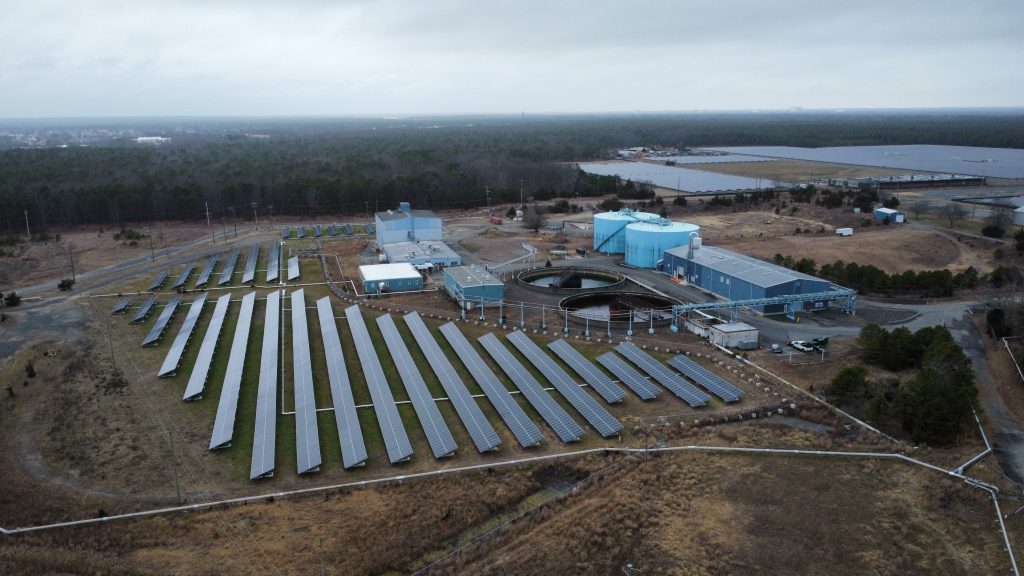The environmental group Save Barnegat Bay has organized a team of high-powered experts that deal with cases worth “hundreds of millions, if not billions” to fight a settlement executed by the state and BASF, the corporate successor to Ciba-Geigy, just one day before a public meeting aimed at informing the public as to the proposed deal.
“It’s likely we’re on our way to court,” said Britta Wenzel, executive director Save Barnegat Bay. “This fight has only just begun.”
Small, Last-Minute Changes
The administration of Gov. Phil Murphy, through the Department of Environmental Protection, announced this week that it would make a token change to the value of damages assessed by the agency at the Superfund site off Oak Ridge Parkway in Toms River. BASF approached the state with settlement talks last year and regulators within the DEP ultimately approved of a plan to close out the decades-old case without ever contacting a local official, announcing the proposal shortly before Christmas and planning no public hearings on the matter. BASF, which had previously claimed the last on which the former chemical dye plant was worthless and collected $17.3 million from Toms River taxpayers in a tax appeal, would keep a profitable solar farm on the site, 250 acres that can be redeveloped for profit, and would turn over 1,000 contaminated acres to the state which would build a park with a boardwalk, trails and an educational center on top of the land.
Meanwhile, there would be no victims’ compensation fund or payout to the local municipalities affected by the environmental disaster to compensate for a loss of habitat, recreational opportunities, permanently-contaminated land and a deadly “cancer cluster” that plagued the community and its reputation for years – arguably to the present time period.
The controversial settlement proposal produced outrage from local officials, who said they were sandbagged by the proposal and were not asked for input. Some local officials have quietly raised concerns of political favoritism at work behind the scenes, given Murphy had served as ambassador to Germany, where BASF is based, appointed employees of the company among members of his Covid recovery team, and began initiatives to lure German firms – including BASF – to New Jersey for economic development opportunities.
The change announced this week – just 24 hours before Save Barnegat Bay would assemble its panel of experts to address the public on the matter – slightly modified the settlement agreement from what was proposed shortly before Christmas last year. BASF, like the original proposal, would turn over 1,000 contaminated acres for preservation, fully design and implement nine natural resource restoration projects on 375 acres of the preserved land, pay $500,000 (instead of $100,000) to the DEP for costs associated with managing the land, give up 50 acres of the 250 acres available for profit-making development, and extend a maintenance period from 10 years to 20 years.
There was no formal fine assessed to the company, no establishment of a victims’ compensation fund, and no transfer of land to Toms River. The state does not have plans to host any additional public meetings on the matter or solicit additional public input, largely forcing litigation if the settlement is to be challenged.
‘Something Fishy’
Save Barnegat Bay officials drew hundreds to the organization’s public meeting on the matter, which took place Thursday night at the Toms River municipal complex on Washington Street. The room was filled with residents, officials and camera crews filming documentaries on what is now expected to become one of the most high-profile environmental legal battles in history.
“You can see the agreement was signed yesterday, nicely in advance of our meeting,” said Wenzel, who worked tirelessly to assemble a team of high-powered attorneys and experts to counter what the group sees as a woefully inequitable outcome in the case. “I have bird experts, I have seagrass experts, but not Superfund experts. On this one, we really needed the A-team, we needed the best.”
Attorney Albert I. Telsey was one of those experts, having worked for four decades in high-stakes environmental law cases after handling some of the original litigation surrounding Ciba-Geigy at the start of his career in law.
“This was 1986, and they said, ‘you’re going to handle our biggest case,'” he recalled. “I asked, ‘What’s that?’ and they said, ‘Ciba-Geigy.'”
Having come full circle, successfully arguing environmental and natural resource cases worth billions, Telsey said the Toms River settlement always seemed strange to him.
“This case is one where they’re working on some kind of publicity angle – they’re trying to convince this community that this is somehow a good thing, and we’re clearly not buying into this story,” he said.
DEP, he said, ignored damage to aquifers, the Toms River, the Atlantic Ocean and any contamination under a top layer of soil that still exists when calculating its settlement that resulted in no monetary fine for BASF, nor any significant monetary compensation for the loss of natural resources over the course of decades. The state, he said, made its own calculations based on “equivalency” of damages while proposing the park and nature center to be built over the 1,000 preserved acres.
After digging through state records, he said, it was found that the state did make a determination that up to $192 million of damages had to be accounted for, though even this figure ignored numerous aspects of environmental damage which could skyrocket the monetary equivalency to the area of about $2 billion.
“By building a 3D model, we were able to compute everything else that surrounds [the plume],” said Jeff Andrilenas, a hydrologist and vice president of TBLS Group, an environmental litigation and consulting firm which has successfully battled the state DEP in the past. “The injury to the aquifer really is, on a yearly basis, the most major injury, and they didn’t count it.”
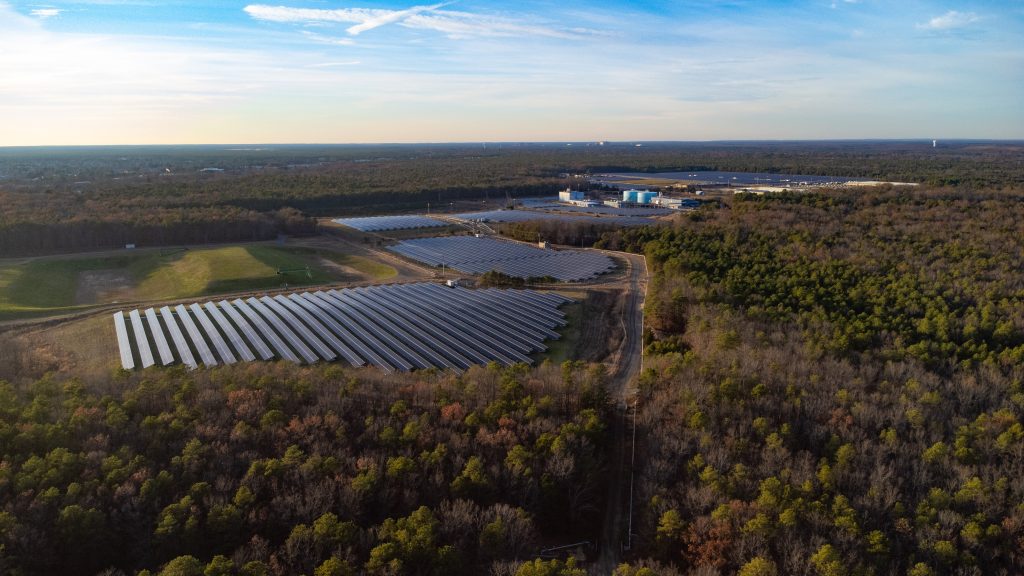
An aerial view of the former Ciba-Geigy chemical site, Toms River, N.J., Dec. 5, 2022. (Photo: Daniel Nee)
The 1,000 acres provided for preservation, he said, represent at minimum one-tenth of the losses, since the Cohansey Aquifer lies below, and groundwater may occasionally bubble up into the contaminated zone. The settlement, he said, only contemplates the top layer of soil – and building a park or further developing land at the site represents further environmental detriment rather than restoration.
“Everything that comes down from the sky is going to infiltrate and become additional injury – not restoration,” Andrilenas said. “That’s why you don’t put all of this stuff on top of a contaminated site. In ten years, 2,000 feet away will still be contaminated. There is no groundwater restoration here. There’s no value to the project they’re offering.”
Meanwhile, for good measure, Andrilenas said there are no less than 24 estuary projects planned – but not funded – by the state in the Barnegat Bay region, while the state has not assessed any fines or major monetary damages to BASF.
“We looked at the settlement at first, and it didn’t look so bad, but then we started asking questions,” said Frances Schlosstein, an environmental expert who heads TBLS Group. “We asked, ‘Well, what was the injury here? What was the restoration value? Are they even?’ The result was that we thought there was something fishy here.”
“Natural Resource Damages is kind of a science in and of itself,” Schlosstein explained. “It’s not personal injury or remediation – it’s only about water loss, habitat loss, recreational loss – all of the things you think about when damages affect something that is rightfully yours.”
Alluding to the value of the damages for which BASF may be liable under existing laws, Schlosstein bluntly stated: “We don’t work on small cases.”
“One of the big things we discovered was that, indeed, what the DEP is proposing is diminutive by orders of magnitude from what ought to be fairly given to Toms River and the communities of Barnegat Bay,” she said.
What’s Next?
Litigation is all but a near-certainty at this point, as the state has already acted to execute its settlement with BASF. Late in the day Thursday, just before the meeting, Save Barnegat Bay issued a statement blasting the state’s “arrogance” in the matter.
“This is not over, and in fact, the department’s arrogance and dismissiveness may actually be one of the best opportunities we have to get Ocean County the justice it deserves,” the group said.
Toms River Mayor Maurice “Mo” Hill echoed the sentiment.
“The Natural Resource Damage settlement negotiated behind closed doors without input from Toms River Township or the other towns impacted by the Ciba-Giegy travesty is woefully inadequate and does not come close to justly compensating the community for the damage done to our environment,” he said.
Toms River Councilman Dan Rodrick, the front-runner to become the township’s next mayor after November’s general election, also pledged his support.
“The NJDEP should be fighting for the people of Toms River, but it appears they’re really working for BASF,” the firebrand councilman said. “The DEP is funded by the taxpayers of NJ, not German multinational corporations like BASF. This shameful display of crony capitalism is why people have lost their faith in government. I’m proud to join with the leadership of Save Barnegat Bay in holding BASF accountable.”
The meeting ended with a few anecdotes – sad ones – from people in the room whose lives have been affected by the pollution and contamination. A video played at the meeting chronicled a family destroyed by cancer and fatal birth defects, employees suffering odd cancers and dying young, and the loss of wildlife in the Toms River – not to mention the outflow pipes to the Atlantic Ocean that spewed wastewater off the barrier island for years.
“I’m the only one in my immediate family who has chronic kidney disease,” said a man who was employed at Ciba-Geigy from 1962 to 1971. “I worked in the laboratory in building 200B, and we used to put a hose on the water spigot and drink the water right out of there. When they were ready to build the outfall to the ocean, they had an employee and we all met in the cafeteria. He had a beaker of untreated water and then he had a clear beaker. He took the clean beaker and drank about four ounces of it. That was the kind of thing they were selling to us.”
While it may take years of litigation to uncover the full scope of damages and fight to settlement agreement, experts said they were confident the state could be successfully opposed.
“All of our cases are like the one here – in the hundreds of millions or in the billions,” said Schlosstein.
The final person to speak at the meeting was Cindy Zipf, a veteran environmentalist who founded Clean Ocean Action, largely responsible for stopping ocean dumping off the Jersey Shore. Zipf said she came to the meeting to show support.
“There is nothing Ciba-Geigy can do to stop her or you all from winning this battle,” Zipf said.


Police, Fire & Courts
Toms River Man Sentenced to Prison for Assault, Eluding, Robbery, Threats

